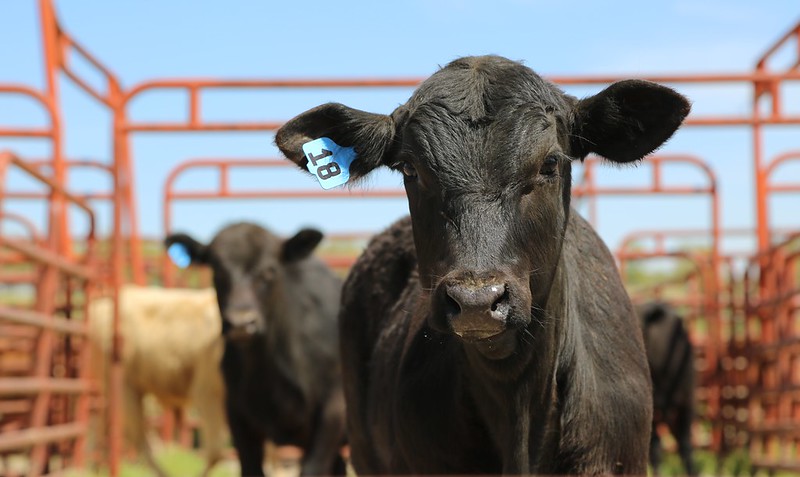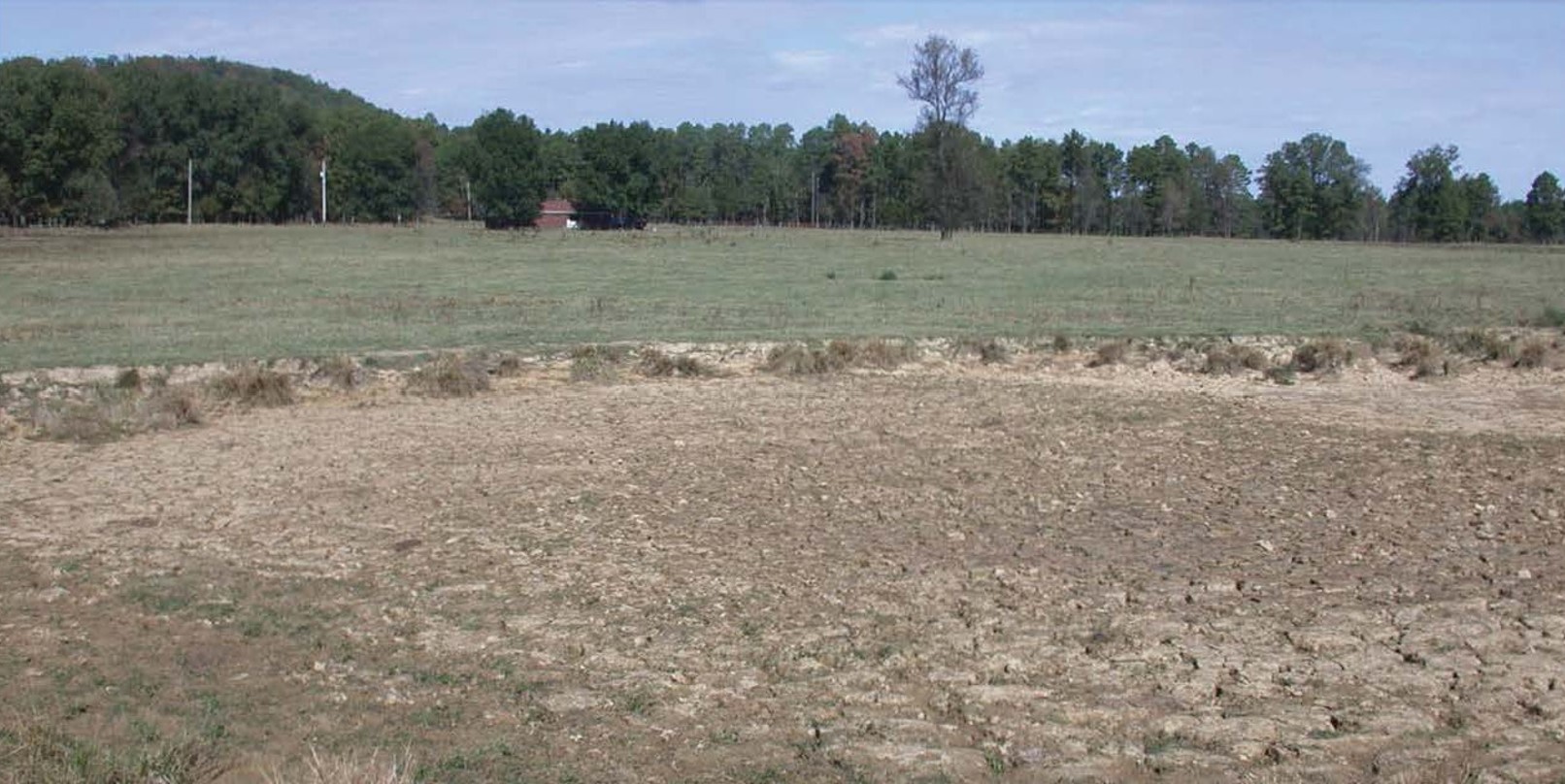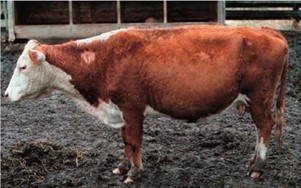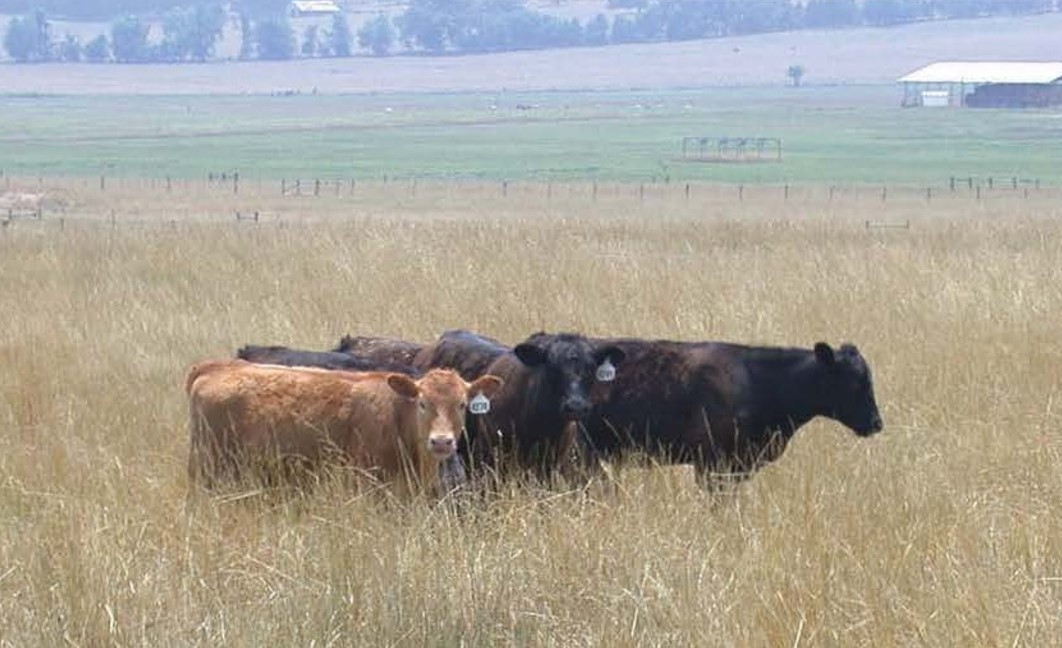Managing Cattle During Drought
 Cattle management during a drought requires careful thought and strategy. Early decision-making
is key to lessen the impact. There are many factors to consider when making decisions
during a drought.
Cattle management during a drought requires careful thought and strategy. Early decision-making
is key to lessen the impact. There are many factors to consider when making decisions
during a drought.
Depending on the length of the drought, culling cattle may be necessary. Being forced to sell in a drought situation becomes very disheartening. To a cattle producer, those cows are more than a herd of livestock. They are often a lifetime of investment and are a desired group of cows, genetically selected by the producer.
Signs of Drought in Arkansas
A drought may last 7 to 8 months from spring until fall. This lengthy season is never a surprise. Droughts progress over time. Signs of an Arkansas drought include:
- A very warm winter
- Spring that comes 6 weeks earlier than usual
- The first cutting of hay comes 4 weeks earlier than normal and is 40 to 60% less than usual
- Most of the state receives little to no rain in April and May
What are factors to consider when managing cattle during a drought?
Decision-making for your cattle involves many considerations. Make decisions on logic not emotion. Be cautious not to let your emotions get the best of you during this difficult season.
Food, Forage, and Water Supply

Managing drought involves balancing forage and water supply with demand. Once it stops raining, you have all the grass growth you will get until it rains again. Unless cows are culled, the forage and water supply will decrease while the demand remains the same.
During a drought, always monitor current water and feed inventories. On hot days with low humidity, pond levels can evaporate rather quickly. Standing forage can also vanish rapidly.
Body Conditions of the Cowherd
Monitor the body conditions of the cowherd. Mineral and vitamin supplementation during drought is very important. Be sure to supplement the cowherd with Vitamin A. Two options for vitamin A are: injectable or loose mineral (200,000 to 400,000 IU).

Early weaning of calves helps maintain the body condition of cows. Once a calf weighs 300 pounds, it is safe to wean. Weaning the calf removes the lactation demand from the cow and lowers her nutritional requirements. The young calf can be sold or fed dry feed with efficient feed conversions.
If drought persists and cows must be culled, the selling prices (price per pound) for cull cows depend on body condition or body weight. There is a positive relationship between body condition and price per pound. That means as body condition goes up, so does the selling price per pound. As body condition goes down, the selling price goes down. If a cow loses body condition, the cow will weigh less, and the selling price will also decrease. The result is a much lower selling price. When culling cows, sell them before they begin to drop in body condition.
Financial Resources and Expenses
Cash is a valuable resource that requires good management during a drought. Selling cows to purchase feed is a strategy, but don’t get carried away. Decide how much you can spend on feed and additional expenses. When you reach that point it may be time to sell out completely. Reserve some cash to “fight another day.”
Many cattle producers are buying hay to supplement forage demand. Put a pencil to the cost.
- Hay costing $50 per 750 lb round bale is equal to $0.07 per lb
- On average, cows eat 22 lbs of dry matter per day or 26 lbs of actual hay = $1.82 per day
- With a 25% wastage, the amount of hay per day is 33 lb costing $2.31per day or $70 per month per cow
Keep a close eye on your financial resources. Don’t overextend to the point you jeopardize ownership of the farm or ranch. Droughts bring additional expenses. Of the these, water is the biggest concern. When ponds dry up, cattle producers are forced to buy water. Pasture management recovery may require investment in fertilizer and weed control. Also consider taxes and seek help from a tax consultant regarding tax management issues.
What are drought management strategies for culling cows?
Develop and prioritize your culling strategy. Cull cows you would normally keep. See this as an opportunity to improve your herd. Determine how many cows you want or should maintain, and cull cows based on records. Decision-making based on logic rather than emotion will result in uniformity and genetic superiority of the smaller cowherd. Keep in mind that the smaller cowherd will be the base to rebuild from following the drought.

When culling the first group of cows during a drought, you should consider pregnancy status and cull all open cows. Cull all cows with bad temperament, lameness, cancer eye, or bad udder. In culling the second group of cows, refer to production records. Cull late calving cows and extreme cows based on frame and muscling.
Cows should be culled based on age. Check teeth to determine the age of the cow. There are two strategies to provide uniformity in the resulting smaller cowherd.
Option 1: Keep 2, 3 and 4 year old females
This strategy keeps the genetically superior females. The thought of this approach is to preserve the genetics for rebuilding after the drought. Compared to older females, the younger females require a higher quality ration but less quantity ration. The younger females often face reproductive challenges (rebreeding and calving difficulties) compared to mature females.
Option 2: Keep 4 to 8 year old females
This strategy maintains the “easy keepers.” Generally speaking, these cows have already reached their mature body size therefore do not need the quality diet. They are usually easier to rebreed and calve compared to younger females. They do require more feed per day than the younger females.
Final Thoughts and Considerations
Managing cattle through a drought is not fun. Early decision-making based on careful thought and strategy can lessen the impact of drought. Remember to make decisions based on logic rather than emotion, and reach out for help as needed. You can contact your local county Extension office for information and resources.
For more information, you can view the webinar, Surviving in the Cattle Business during the Drought.
Additional Resources
Common Arkansas Plants Poisonous to Cattle | FSA3025
Nitrate Poisoning in Cattle | FSA3024
General Traits of Forage Grasses Grown in Arkansas | FSA2139
Arkansas 300 Days Grazing System - Getting Started | FSA3139
Brassicas for Forage | FSA61
Grazing Stockpiled Forages to Reduce Hay Feeding During Fall and Winter | FSA3133
Prussic Acid | FSA3069
Calibrating Drills and Broadcast Planters for Small-Seeded Forages | FSA3111
Baled Silage for Livestock | FSA3051
Measuring Forage Moisture Content Using an Air Fryer | FSA3155
Planting Oats for Forage | FSA3151
How to Conduct a Seed Germination Test at Home | FSA3149
Drought Management and Recovery for Livestock Systems | MP530
Impact of the 2012 Drought on Field Crops and Cattle Production in Arkansas – A summary of how the 2012 drought affected row crops and cattle production in Arkansas.